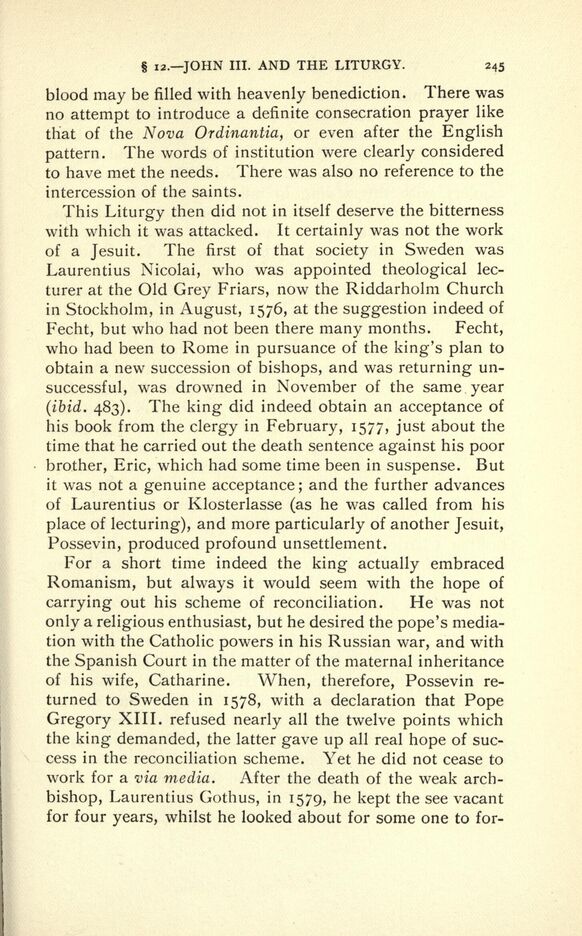
Full resolution (JPEG) - On this page / på denna sida - V. The Swedish Reformation under Gustaf Vasa and his sons Eric and John (1520—1592 A.D.)

<< prev. page << föreg. sida << >> nästa sida >> next page >>
Below is the raw OCR text
from the above scanned image.
Do you see an error? Proofread the page now!
Här nedan syns maskintolkade texten från faksimilbilden ovan.
Ser du något fel? Korrekturläs sidan nu!
This page has never been proofread. / Denna sida har aldrig korrekturlästs.
i2. JOHN III. AND THE LITURGY. 245
blood may be filled with heavenly benediction. There was
no attempt to introduce a definite consecration prayer like
tliat of the Nova Ordinantia, or even after the English
pattern. The words of institution were clearly considered
to have met the needs. There was also no reference to the
intercession of the saints.
This Liturgy then did not in itself deserve the bitterness
with which it was attacked. It certainly was not the work
of a Jesuit. The first of that society in Sweden was
Laurentius Nicolai, who was appointed theological lec
turer at the Old Grey Friars, now the Riddarholm Church
in Stockholm, in August, 1576, at the suggestion indeed of
Fecht, but who had not been there many months. Fecht,
who had been to Rome in pursuance of the king s plan to
obtain a new succession of bishops, and was returning un
successful, was drowned in November of the same year
(ibid. 483). The king did indeed obtain an acceptance of
his book from the clergy in February, 1577, just about the
time that he carried out the death sentence against his poor
brother, Eric, which had some time been in suspense. But
it was not a genuine acceptance; and the further advances
of Laurentius or Klosterlasse (as he was called from his
place of lecturing), and more particularly of another Jesuit,
Possevin, produced profound unsettlement.
For a short time indeed the king actually embraced
Romanism, but always it would seem with the hope of
carrying out his scheme of reconciliation. He was not
only a religious enthusiast, but he desired the pope s media
tion with the Catholic powers in his Russian war, and with
the Spanish Court in the matter of the maternal inheritance
of his wife, Catharine. When, therefore, Possevin re
turned to Sweden in 1578, with a declaration that Pope
Gregory XIII. refused nearly all the twelve points which
the king demanded, the latter gave up all real hope of suc
cess in the reconciliation scheme. Yet he did not cease to
work for a via media. After the death of the weak arch
bishop, Laurentius Gothus, in 1579, he kept the see vacant
for four years, whilst he looked about for some one to for-
<< prev. page << föreg. sida << >> nästa sida >> next page >>